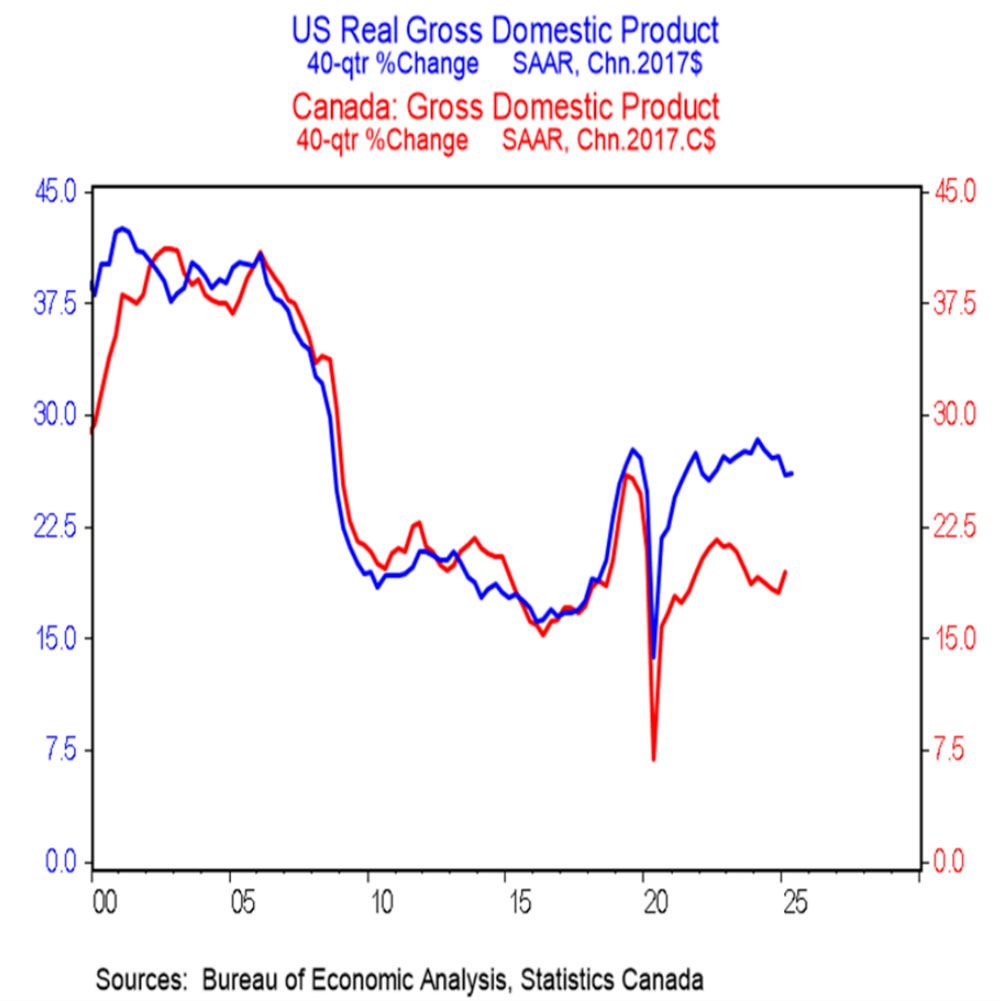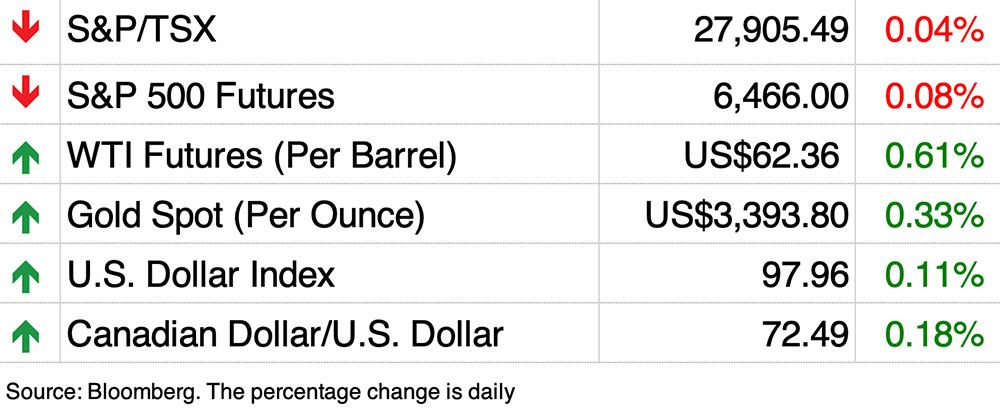Posthale: Why Trump may have to lower rates – (spoiler, they don’t work)


According to Donald Trump, the rates had to pay foreign exporters, breathe new life into US production and reduce US trade and government deficits.
High ambitions, but although it is still early, the proof is that it is unlikely that they will achieve one of these goals, according to economists with Royal Bank of Canada.
Until now it is not foreign exporters, but American buyers who have absorbed the most tariff costs.
Although American buyers technically pay the import duties, exporters can share those costs by lowering their prices. Yet the American import price index, which does not include tasks, has risen “constantly” this year.
“This indicates that American buyers continue to pay higher prices, and there has been a minimum rate distribution of foreign sellers,” said
RBC senior economist Claire fan in her report.
“Until now, the data from the consumer price, those tariff costs have not been passed on to households, that makes us companies to absorb the costs, which endangers jobs.”
There is also little evidence that rates stimulate the production of the US. Factory jobs fell by more than 100,000 in July from a year ago and future hiring intentions remain weak. The ISM worker index of the production of ISM reaches its lowest level since the financial crisis, outside the pandemic.
“The reality is that the scale of capital investments needed to considerably repeat the production activity is too great for companies to justify if the future of the American rate policy remains very uncertain,” Fan said.
Even if more factories were to be built, the staff of them would be a challenge, taking into account the aging population of America.
The past has also shown that the forcing of a rearrangement can be counterproductive due to rates, she said. During Trump’s first term, rates on steel and aluminum temporarily raised production in the United States with US $ 2.3 billion. But this boost cost US $ 3.5 billion in lost production in downstream industries that were affected by higher costs.
Regarding the trade deficit, if you take into account the flow of goods in the country to avoid tasks earlier this year, this is actually 28 percent wider in 2025 than a year ago.
In the longer term, RBC is of the opinion that little progress will be made to reduce the trade deficit, while American tax deficits remain so high.
With regard to that score, the United States has collected US $ 65 billion more since April than last year, and RBC thinks that the total annual income from Rates can achieve US $ 350 billion.
But that is a “drop in the bucket” compared to a federal shortage that is expected to grow this year of US $ 1.8 trillion to US $ 3 trillion in 2034, partly thanks to Trump’s “One Big Beautiful Bill,” Fan said.
Add an economy to this that slows down under the weight of the rates, and RBC believes that the current rates are untenable and will fall before the end of the year.
Register here To have PostHate delivered directly to your inbox.

In the past decade, the real economic growth of Canada America has left a cumulative 5.6 percent more with the American economy since 2015. But what were the costs of that growth? Although some suggest that the former Trudeau government and the poor productivity are the fault of Canada, Douglas Porter, chief economist for BMO Capital Markets, has another take.
During those 10 years, the finances of the US government have deteriorated, with the budget deficiency swelling of 2.4 percent of the gross domestic product in 2015 to 6.4 percent this year, he said. In the meantime, Ottawa’s budget has gone from approximately balance to a shortage of about 2 percent of GDP at the time – “a much smaller net deterioration.”
“That alone is good for a large part of the growth; that means that the US has bought part of the stronger growth by seriously weakening the government’s finances,” Porter wrote.

- Federal Byelection in Battle River-Crowfoot, with conservative leader Pierre Poilievre in the running
- Today’s data: Canada Housing Starts, International Securities Transactions, United States Nahb Housing Market Index
- Income: Palo Alto Networks Inc.

- Tesla continues to lose customers in Canada. Can it ever bounce back?
- The Great Wealth Transfer requires more than a 20-year will and naming a few beneficiaries
- Nine reasons Why wait for houses to become more affordable is not the best plan
If you rent an apartment today, there has probably never been a better time to negotiate with a landlord. Landlords become creative and offer gift vouchers in furniture stores, free parking and even offer a free designer to set up in some cases, but they rarely offer to lower the rent. Financial postcolumnist Garry Marr says the window is open to negotiate, but remember that it can be short. Read more
McLister on mortgages
Do you want to learn more about mortgages? The financial postal column of the mortgage strategist Robert McLister can help navigate by the complex sector, from the latest trends to financing options that you do not want to miss. Check its mortgage interest page on the lowest national mortgage interest in Canada, updated daily.
Financial message on YouTube
Visit the financial posts
For interviews with Canada’s leading experts in business, economy, housing, the energy sector and more.
Today’s posthaste is written by Pamela Heaven With additional reporting from Financial Post staff, The Canadian Press and Bloomberg.
Do you have a story idea, pitch, embargo report or a suggestion for this newsletter? E -mail us on
.
Make a bookmark of our website and support our journalism: Don’t miss the business news that you need to know – Add Financialpost.com to your bookmarks and sign up for our newsletters here








